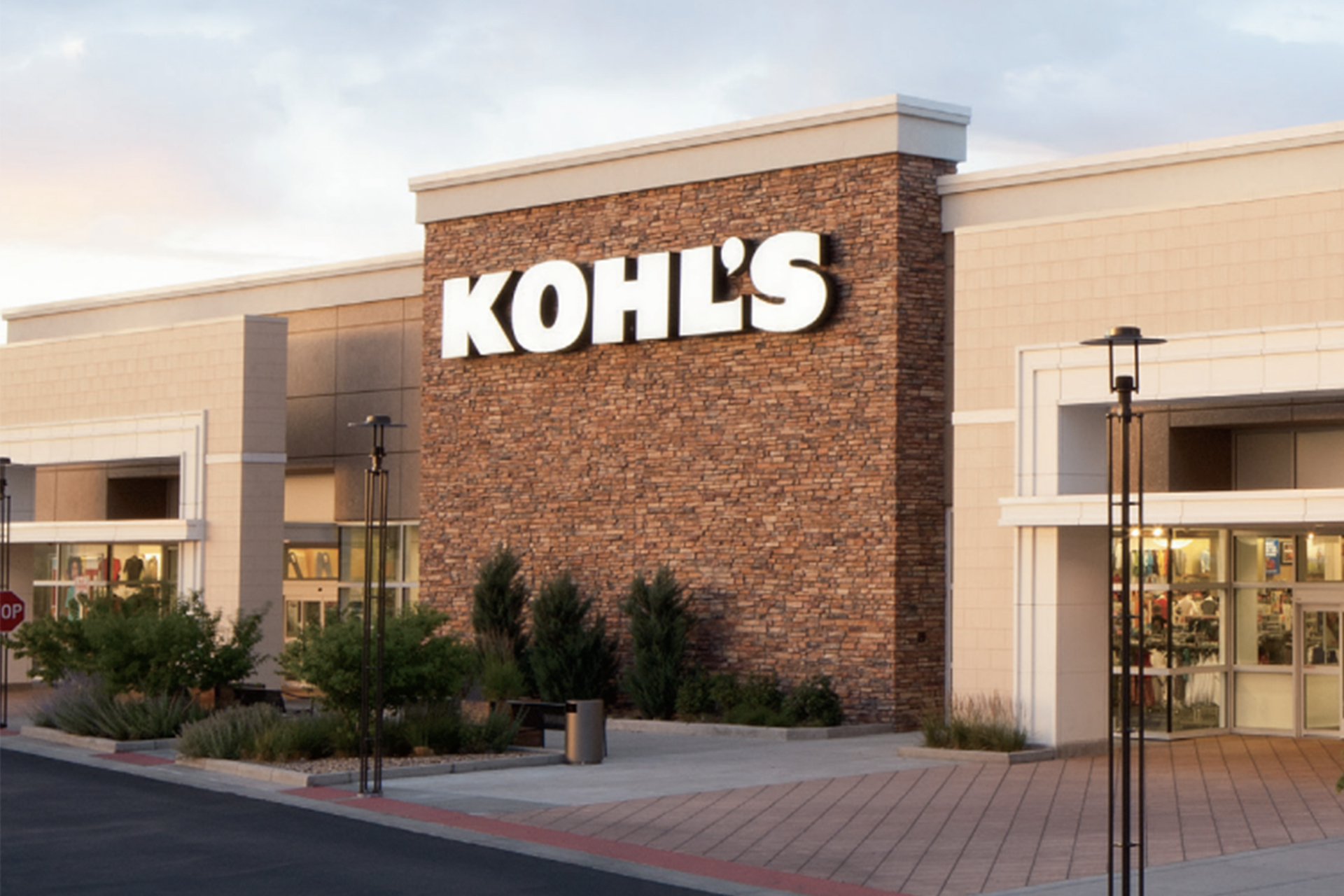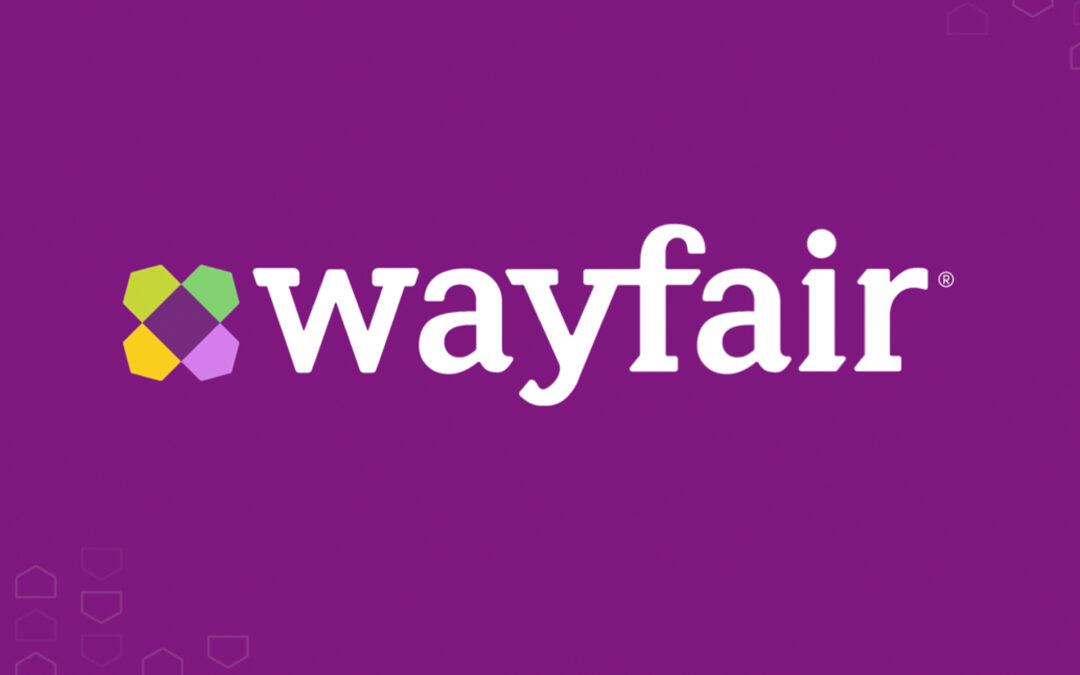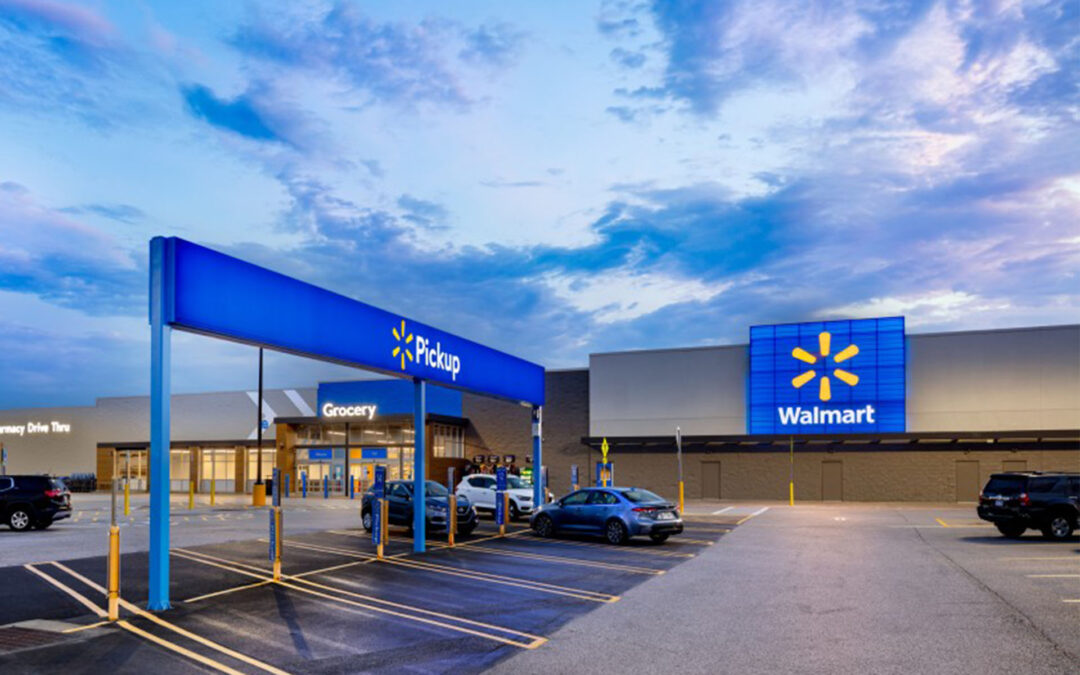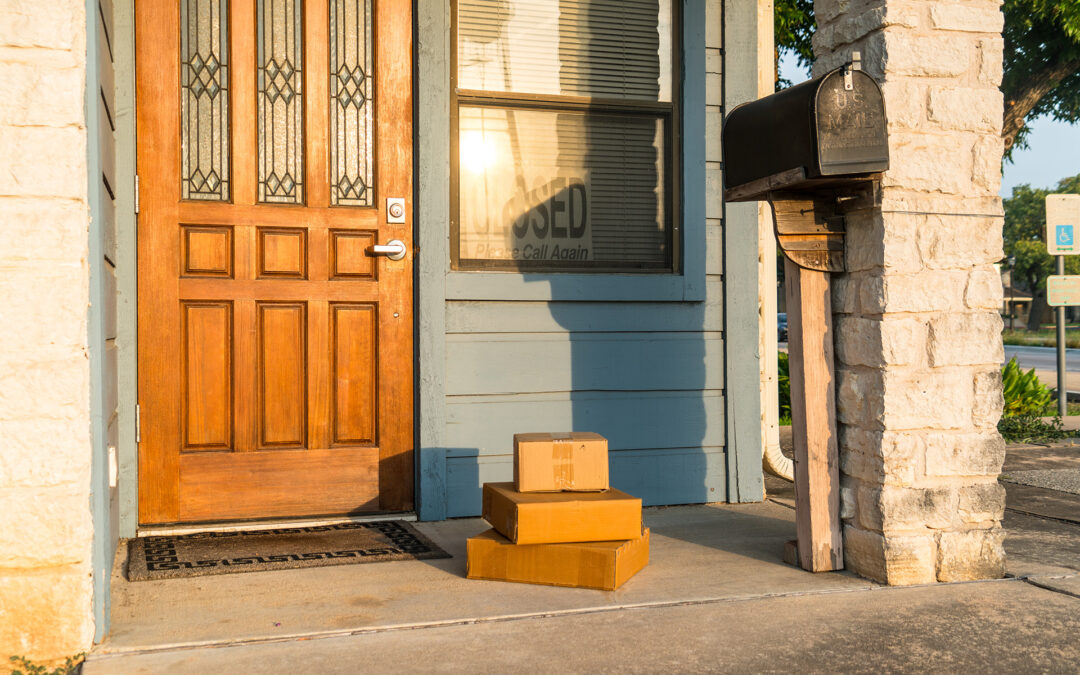With new leadership in place and a plan that will leverage the company’s off-mall positioning and focus on middle-income consumers, Kohl’s Corp is approaching this holiday season as an opportunity to build on recently launched initiatives and shift back into growth mode.
Kohl’s looks to recapture sales lost to a previous repositioning, particularly in home and certain apparel categories, such as petites and dresses, while building off new points of emphasis, such as gifting and impulse. As it does so, Kohl’s plans to overhaul e-commerce and advance merchandising partnerships, including Sephora and Babies ‘R Us.
The company is also simplifying its discounting and loyalty programs, which have made customer acquisition more difficult.
However, the question becomes, can Kohl’s become a sufficiently compelling proposition to today’s middle-income shoppers, particularly younger consumers vital to the retailer’s future? Sephora boutiques and Amazon returns have drawn fresh faces into Kohl’s stores, and to the degree that such programs can entice new shoppers to cross-shop, Kohl’s may have an extra engine that can help it regain sales and earnings momentum.
In a second-quarter conference call, CEO Thomas Kingsbury provided an overview of Kohl’s strategy and prospects for what he noted would be a very promotional holiday season, when the company will have a chance to connect with consumers less familiar with the operation. Already, Kohl’s has launched a rebranding program using the slogan “Where Families Come First.” Kohl’s emphasizes that it can be a convenient shopping resource for every member of any family. The new brand platform, with its value positioning and enhanced product offering, marks Kohl’s as a prime destination for families, the company maintained.
Already, in a promotion that ran in early September, the company held a sweepstakes and gave out millions of Kohl’s Cash coupons, its in-house currency, to invite the interest of shoppers in its new direction. Outreach included advertising in digital and print media, as well as through video and social media channels where many of Kohl’s competitors have been more active.
Kingsbury stated Kohl’s remains focused on further strengthening its balance sheet while executing against the company’s four strategic priorities: enhancing the customer experience, accelerating and simplifying value strategies and managing inventory and expenses with discipline. He said Kohl’s continues to manage inventory and expenses tightly. He added that Kohl’s has taken significant action to enhance the customer experience and simplify its value strategies, and he added that the company has more work to do on those initiatives.
Since joining Kohl’s executive suite, first as interim, then as full-time CEO, Kingsbury has confronted the challenge of getting Kohl’s out of the doldrums and into growth mode, something that’s been a dilemma for the company for a while. It has launched programs and made various realignments of its operations, including making moves some observers thought risky, including taking Amazon returns. However, the decision to do so was made as customer acquisition became more difficult. In its initially successful rollout across the United States, Kohl’s relied on a basic strategy of locating in neighborhoods, which made the mid-tier department store operator a convenient alternative to shopping at more distant malls and major power centers.

Tom Kingsbury, CEO, Kohl’s
However, as the company attracted shoppers who embraced its proposition and customer acquisition became more difficult and more expensive, Kohl’s began to think more about generating additional sales from existing customers. It created an increasingly complex couponing and discounting program that eventually came to focus on the use of loyalty and namesake credit cards to simplify the process of getting all the available deals. In fairness, discounting programs at rivals such as JCPenney and Macy’s had become a more complicated proposition for customers, too. Eventually, though, by the middle of the last decade, Kohl’s managers, particularly on the IT side, came to admit that the discount/rewards program was difficult to fathom for consumers who weren’t long-time shoppers. That made customer acquisition even more difficult.
After an initial strong run as it expanded across the U.S. through the beginning of this century, Kohl’s entered the doldrums. In fiscal 2003, Kohl’s operated 542 stores and looked back at a solid decade of growth, with sales advancing from $1.31 billion in 1993 to $10.28 billion in 2023. However, net income fell for the first time in the decade to $591 million from a peak of $643 million in fiscal 2002 as comparable sales slipped 1.6%, again, the first decline in a decade.
Fast-forward two decades. In fiscal 2023, with Kohl’s operates 1,174 stores, year-over-year net sales declined to $16.59 billion from $17.16 billion while net income gained to $317 million after a loss of $19 million in the year-earlier. Through a long period of ups and downs, Kohl’s faced ongoing challenges while gaining steady, positive financial traction. In 2023, Kohl’s began a transition.
Kohl’s announced in November 2022 that CEO Michelle Gass would leave the company. She went on to become president and then CEO of Levis Straus. At that juncture, Kohl’s appointed Kingsbury, already on the company’s board since 2021, interim CEO. Kingsbury had been president, CEO and chair of Burlington Stores, stepping down in 2019 but remaining for a transitional period as executive chairman. Prior to his time at Burlington, Kingsbury had done a two-year stint at Kohl’s in a top executive role, handling everything from marketing to e-commerce. He was named permanent Kohl’s CEO last year.
Gass joined Kohl’s in 2013 as chief customer officer after a long stretch at Starbucks and became CEO in 2018. Gass’s leadership at Kohl’s was not without controversy, but it also saw accomplishment, particularly when the company struck a deal with Sephora, which had been working with JCPenney but switched department store partners by 2021. Gass also changed the core assortments, moving it more to casual fashions and activewear and deemphasizing other elements in the store, including home. Although she positioned the company for the consumer turn to casual and comfortable in the COVID-19 pandemic, Gass drew criticism from observers concerned that Kohl’s wasn’t getting all that it could out of the surge in home products purchasing that occurred at the same time. Then, as consumers began to return to work after the pandemic waned, Kohl’s move away from workware became a challenge.
In November of 2022, Morningstar Analyst David Swartz warned Kohl’s could suffer if activewear cooled off when consumers returned to their offices as the pandemic became a lesser issue or due to changing tastes. He noted Kohl’s sales in the activewear category grew at a compound average annual growth rate of 10% between 2016 and 2021, rising to 24% from 14% of the company’s total sales. Kohl’s had increased shelf space for brands such as Nike, Adidas and Under Armour, but those brands were already widely available in retail and through direct channels. At that point, Nike was cutting back on shipments to wholesale partners that it no longer views as strategic, Schwartz observed, which could affect Kohl’s.
As for household goods, in fiscal 2008, home represented 18% of Kohl’s sales, as it did again in fiscal 2013. In fiscal 2018, as the pandemic loomed, home represented 19% of revenues. However, in 2023, home came in at only 15% of total Kohl’s sales.
Moving Forward
From his perspective, in the second quarter conference call, Kingsbury said that several of the initiatives launched under his leadership had taken hold, but some were yet to gain significant traction. For example, he expressed satisfaction with the way the company has positioned merchandise for the home as it rebuilds the product category. However, he noted the retailer has more work to do to revive categories such as electrics and bedding business that were deemphasized during the previous regime.
“In general, I think the team has done a very nice job of repositioning the home business for growth,” Kingsbury said. “I feel very good about the home in terms of the progress the team has made there overall. Home decor has been very good, not only in the seasonal decor but also in everyday decor. I’m looking forward to the holiday season. The team has put together an incredible holiday decor presentation, which will be right in the front of the store as it was last year, but you’ll see a significant build in terms of the presentation there overall.”
Kingsbury added some of Kohl’s apparel initiatives had been getting positive consumer response, pointing to dresses as one such segment.
The period of Gass’ leadership saw Kohl’s challenged by activist investors, particularly Macellum Advisors, but also including Ancora Holdings, Legion Partners Asset Management and 4010 Capital. For a while, some investors pressured Kohl’s to find a buyer, declaring that operating outside the public sphere would prove advantageous.
Kingsbury’s appointment to the board was part of a deal struck by Kohl’s directors with the investors. However, investors remained unsatisfied, and the conflict continued until Gass departed and Kingsbury became CEO. Even as the conflict with investors occurred, the company went through a potential sales process, which Swartz noted included some reasonable propositions that never led to a deal.
Although he pointed to positive steps taken in executing the company’s four priorities, Kingsbury pointed out that management found second-quarter results disappointing.
“Our customers exhibited more discretion in their spending, which pressured overall sales and overshadowed strong performance in our key growth areas, including Sephora, home decor, gifting and Impulse,” Kingsbury said in the second-quarter conference call. “Although we are disappointed with our second-quarter sales, we continue to execute well operationally, enabling us to deliver a 13% increase in earnings driven by gross margin expansion and strong inventory and expense management.”
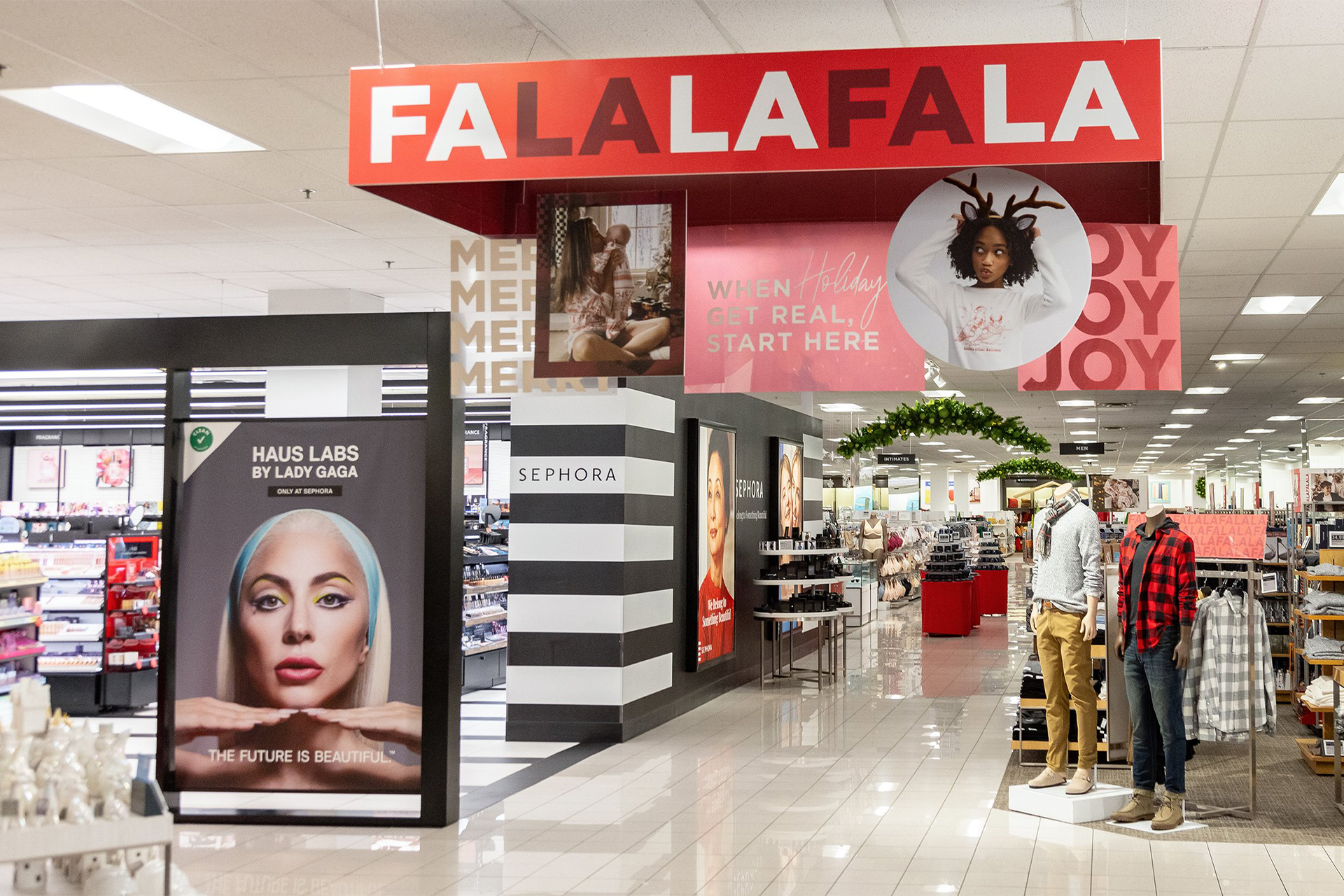
Sephora location in Kohl’s
The addition of Sephora was a coup for Kohl’s and continues to drive results. Kohl’s now has about 1,050 Sephora shops operating in its stores following the opening of 140 shops in 2023.
In the conference call, Kingsbury called Kohl’s partnership with Sephora incredibly successful, bringing Kohl’s millions of new customers and boosting market share within the industry. He also said about 35% of the Sephora baskets have another product shopped at Kohl’s. Of Sephora shoppers, 40% are new to Kohl’s, which creates an opportunity for rub-off purchases in the gift and seasonal areas. Meanwhile, the retailer is attempting to move juniors apparel adjacent to Sephora shops. In the conference call, Jill Timm, Kohl’s CFO, added Sephora customers shop at Kohl’s about one and a half times more frequently than its average customer.
Kingsbury said that Kohl’s remains confident that the partnership with the beauty specialist can continue driving solid growth. The partnership with Sephora has given the beauty business at Kohl’s a boost generally, and recent introductions, such as House Labs by Lady Gaga in makeup and Ariana Grande in fragrance, have created fresh incentives to shop.
Sephora at Kohl’s continued to deliver strong growth in Q2, with total beauty sales increasing by approximately 45%. Comparable beauty sales grew in the low teens percentage-wise with consistent performance across stores where shops opened in 2021 and 2022. Sephora shops opened in the past year are performing better than expected. Fragrance, bath and body, and skin care were especially strong during the quarter in brands including Sol de Janeiro, Sephora Collection, Rare Beauty and Charlotte Tilbury, demonstrating impressive growth, Kingsbury said.
Scott Benedict with consultancy McMillan Doolittle told HomePage News Sephora’s gains at Kohl’s are positive in and of themselves, and the contribution is evidence that Kohl’s has managed to integrate other businesses into its own operation successfully.
“I think they are a great model for making retail partnerships very effective and additive to their business,” Benedict said. “The Sephora and the Amazon return programs seem to have been successful but as they lap those innovations, they have to continue to identify and implement a ‘what’s next’ effort to continue to provide new and compelling draws with existing consumers.”
The only shadow over Sephora at Kohl’s might be an industry-wide slowing of sales gains in the beauty segment. Thus far, Sephora itself doesn’t seem to be affected. Parent LVMH said, in introducing its results for the first half of 2024, Sephora’s momentum in the United States continues to be strong, reaching a record-breaking market share thanks to the expansion of its store network and its partnership with Kohl’s, which has enabled the company to attract new customers. For its part, rival Ulta Beauty comparable sales slipped 1.2% in the second quarter as earnings declined to $252.6 million from $300.1 million in the year-previous period.
Mass market beauty sales have slowed more than prestige, according to Circana. It reported that mass-market beauty sales were relatively flat in the first half of the year, while prestige revenues gained 8%. For 2023, prestige beauty industry dollar sales gained 14% while mass market sector sales advanced 6%. If the big gains in beauty seen in recent years are slowing down, particularly on the mass-market end, how much a prestige brand, as sold through a mass-market retailer, keeps growing could be a question that has at least some impact on Kohl’s in the year ahead.
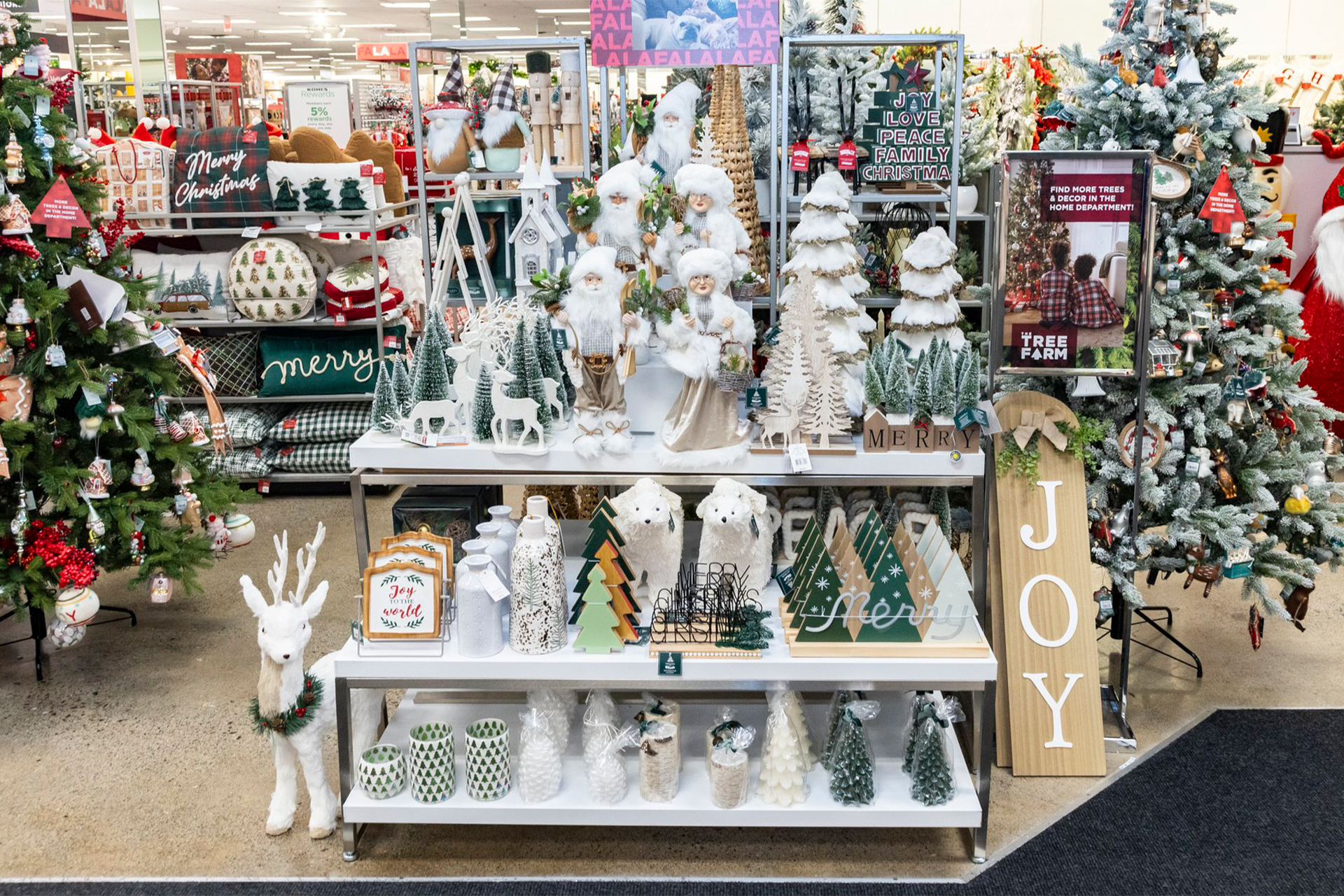
Kohl’s Holiday 2024
Beyond Sephora, sales of seasonal and everyday decor advanced more than 35% year over year in the second quarter, Kingsbury said. The company also enjoyed growth across segments such as storage, wall art, glassware and pet. Sales in the gifting business gained 30% during the period as shoppers responded to the available assortment and front-of-store positioning during key events, including Mother’s Day, Father’s Day and Fourth of July. Kohl’s plans to approximately double its holiday gifting assortment as the year proceeds, Timm said, building off a successful 2023 season. The holiday 2024 presentation will include Sephora gift boxes.
Second-quarter sales in the impulse segment increased by 70% as the company expanded checkout line fixtures that house merchandise to 50 more stores. Kohl’s plans to add 200 more checkout lines in the third quarter, bringing the total to 435 in time for the core holiday season.
Baby Biz
Kingsbury noted Kohl’s will leverage its recently forged partnership with Babies ‘R Us. Kohl’s is opening 200 Babies ‘R Us shops across the store base and has launched the product line-up on its website. The assortment incorporates thousands of products across baby gear, furniture and accessories from popular brands, Kingsbury noted. Kohl’s is also introducing Motherhood, a maternity brand the company believes will enhance its merchandise offering for expectant mothers and is in the midst of launching a Babies “R” Us registry. As the second quarter ended, car seats, strollers, and furniture were already emerging as strong segments for Kohl’s, even if those categories were only getting support from about half of the stores that are slated for the initial 200 Babies ‘R Us shops, Kingsbury said.
“Our baby offering is also available to customers online,” Kingsbury said. “We will learn from this initial launch, which will inform our plans for future expansion.”
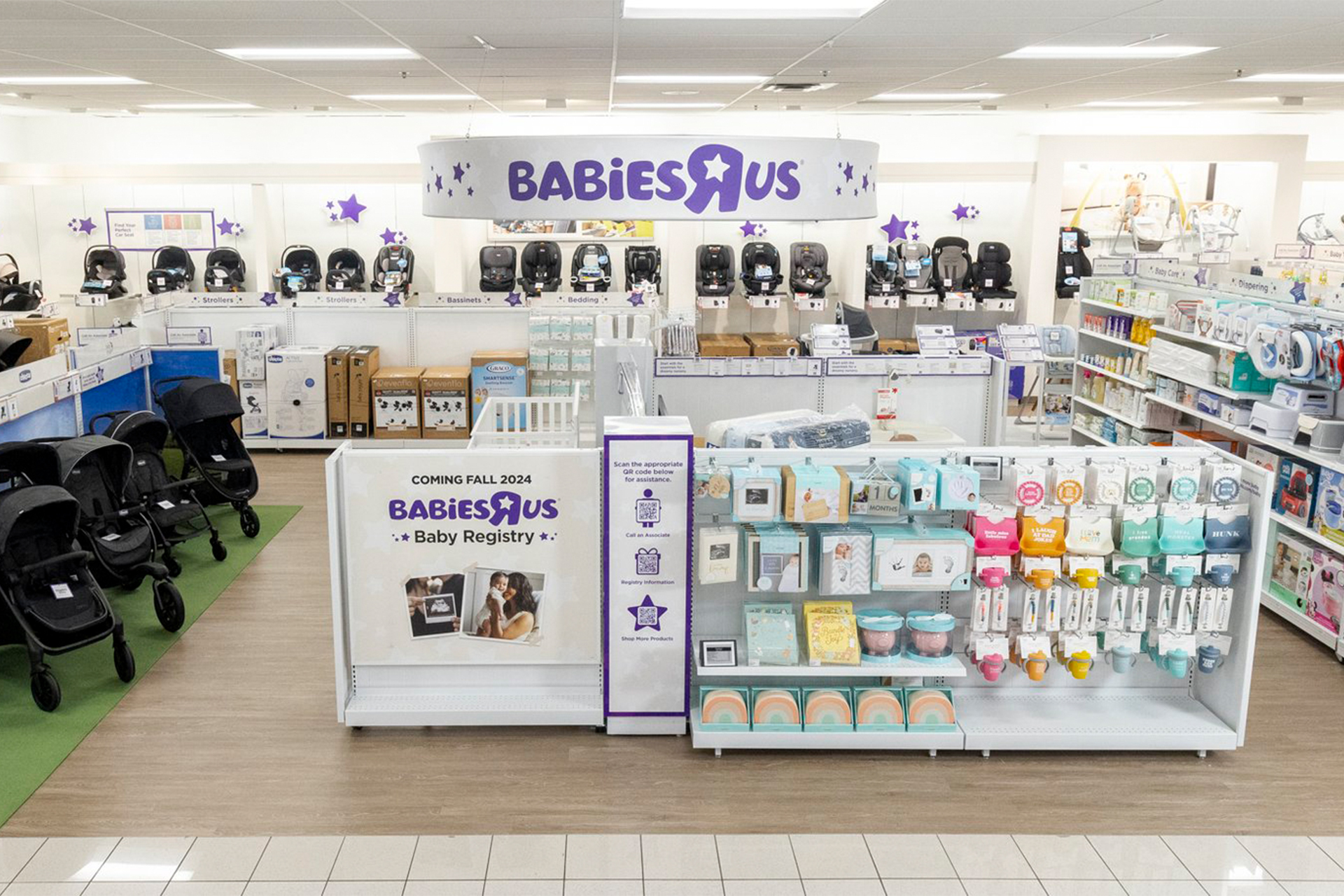
Kohl’s Babies “R” Us Assortment
The activity in adjacent categories such as gifting, home décor and baby has yet to spill into Kohl’s core housewares business. Kingsbury said Kohl’s legacy home business, including sales across kitchen electrics, floor care and bedding, remained soft in the second quarter. He noted the company anticipates those categories to stabilize this fall as the company emphasizes innovation, new brand introductions and stronger value messaging.
Digital sales at Kohl’s slipped 4% in the second quarter but online is a part of the operation Kohl’s wants to enhance. Kohl’s digital sales gained as the COVID-19 pandemic loomed in fiscal 2019, up in the low double digits and reaching 24% of $18.89 billion in net sales. As the pandemic sank in and stores closed in Kohl’s fiscal, digital sales gained 29% and represented 40% of overall revenues, which had decreased to $15.03 billion. As store sales rebounded to $18.47 billion in fiscal 2021 with the pandemic loosening its grip, digital revenue remained flat and represented 32% of sales. Skip ahead to fiscal 2023 and digital sales were down 14% but still represented 29% of net sales totaling $16.59 billion.
Kingsbury underscored digital sales outperformed store sales in the second quarter with increasing gains in transactions, although sales in both declined overall. To grow e-commerce again, Kingsbury said Kohl’s is increasing personalization and using social commerce to reach younger consumers.
Timm made the observation that transactions gained in the quarter, something Kohl’s hasn’t been able to brag on for several years. Conversion is up, too, she added. Timm credited the gains to Kohl’s, which brought more newness into the stores. As the company revisited its approach to the consumer, Kohl’s added some lower-priced products that, even if not in the impulse category, were an easy additional purchase for many of its middle-income shoppers who feel squeezed by inflation. At the same time, Kohl’s is bringing back fine jewelry to 200 stores, so consumers will see more fresh and, the company hopes, attractive product on their Kohl’s visits.
In outreach to consumers, Kohl’s will clarify and promote the changes the company is making to reestablish itself as a comprehensive value alternative shopping to malls or major power centers beyond the communities where Kohl’s stores operate, Kingsbury noted.
“We are evolving our marketing message to increase consideration of Kohl’s as a leading destination for value for the entire family,” he said. “Our advertising has already begun to include messaging around lower price points across our assortment. And we will begin leveraging real customers and influencers to showcase not only our great values but also our enhanced product offering.”
At the same time, Kohl’s is working to simplify its discounting program. The recent emphasis on Kohl’s cash as a discounting vehicle constitutes an easier-to-understand value proposition that potential customers might find easier to embrace.
“We’ll continue to lean into Kohl’s Cash as a key value differentiator,” Kingsbury said.
Among observers, opinions offered about Kohl’s tend toward caution overall. McMillon Doolittle’s Benedict said Kohl’s has seemed to evolve with each passing sales and earnings release. He said Kohl’s off-mall store strategy has worked in the context of providing department-store quality brands at an appealing value for middle-class consumers.
“They have escaped the stigma of being mall-based by providing quality merchandise brands and products that one might associate with the department store channel,” Benedict said.
However, Benedict believes Kohl’s still has work to do on omnichannel integration to enable its core shoppers to identify brands, products and seasonal offers made online that can be purchased or just picked up at a local physical store. Although Kohl’s intends to use personalization to enhance the shopping experience, Benedict said it needs to build up that capability, as well as its efforts in social media and with influencers.
“They are not utilizing personalization to make relevant product recommendations to consumers through their marketing channels in a way that would be differentiating and compelling,” Benedict said. “Their coupon offerings are interesting, but they do not appear easy to execute via digital channels. Increasingly, younger consumers arrive at product decisions through social media channels.”
At a time when how to reach consumers is changing, Benedict said, Kohl’s has been a “non-player in communicating their compelling offers through the channel that their target shopper wants to utilize to learn about new products.”
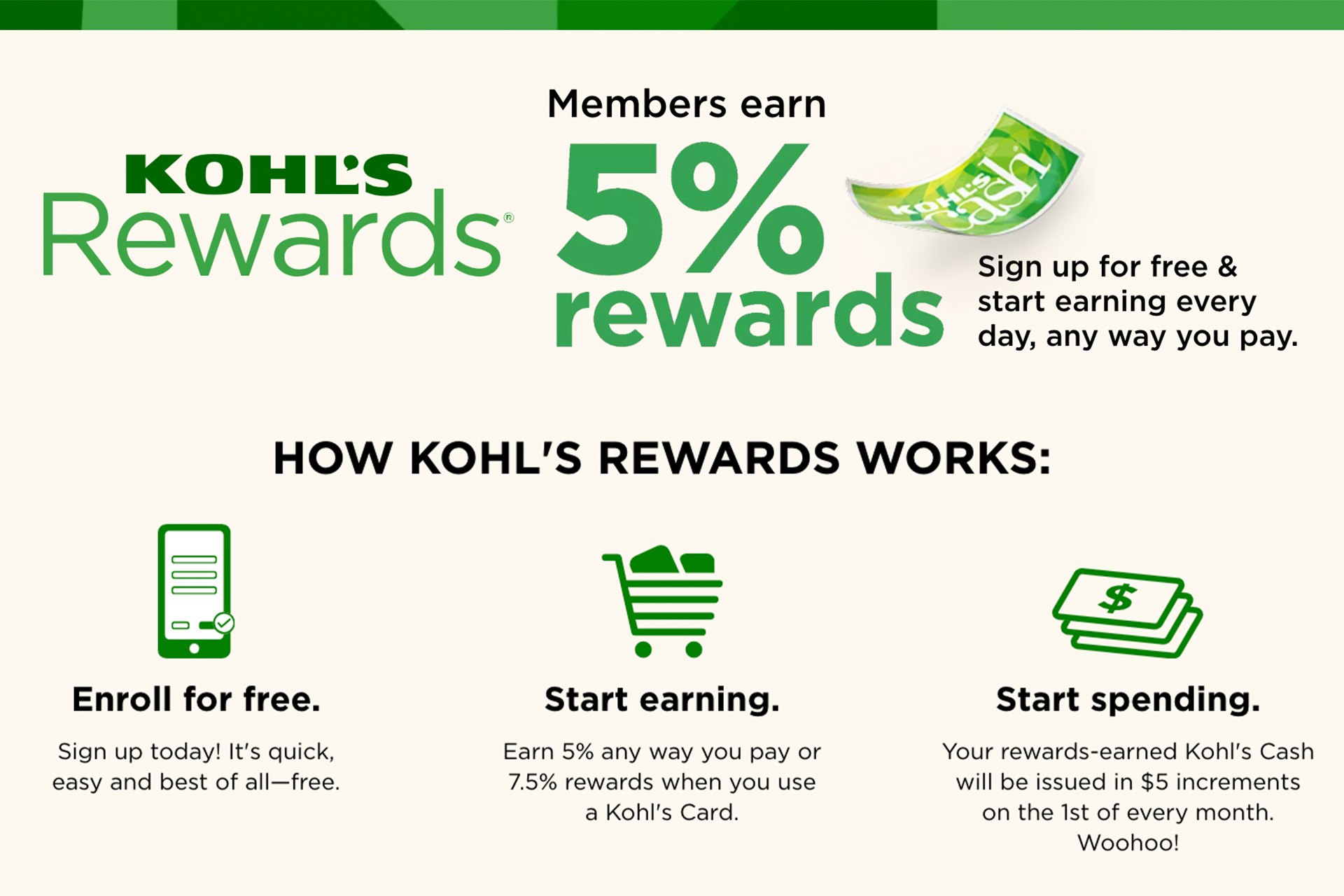
Kohl’s Rewards
Benedict puts Kohl’s in the category of department stores that have adapted better to changing market conditions and could enjoy long-term success in contrast to full-line department stores “that continue to fade.”
In reviewing Kohl’s second quarter, retail credit advisor Pulse Ratings observed the company’s comp decline was larger than expected. Pulse Ratings indicated a more frugal middle-income consumer is partially responsible, and certain Kohl’s actions, including moving jewelry to make room for Sephora shops, are also partly responsible. As noted, fine jewelry is something that the company is starting to address. Still, Pulse Ratings was positive on Kohl’s solid inventory management, which helped margins, and the company’s decision to pause share repurchases as it strengthened the balance sheet.
In a recent department store report, Coresight Research noted a consumer survey indicating Kohl’s was the most popular retailer in its sector, with a shopper penetration of 50%, followed by Macy’s at 44.9% and JCPenney. Coresight saw Kohl’s widespread physical presence across the United States and its positioning in sites that are convenient as factors in its popularity.
Coresight noted luxury department stores have been in decline, although they remain an important conduit for many brands. Department stores, in general, given their large physical plants, can become staging points for e-commerce networks, although big, complex operations are, in general, more difficult to manage.
In its work with its own website and in taking Amazon returns, Kohl’s has demonstrated it wants to do more with its physical locations. In May 2022, Kohl’s announced it would expand a small format store concept it had developed and piloted to 100 stores. The retailer developed a smaller store footprint of 35,000 square feet versus a typical 80,000-square-foot Kohl’s to improve store economics, particularly as it is considering moving into new markets. The company noted that, at the time, stores were the foundation of its omnichannel strategy, providing convenience points for returns, including Amazon pick-up, with smaller stores providing those services as did the bigger ones.
How smaller stores might accommodate Kohl’s various current initiatives is yet to be clear. In June, Kohl’s announced a deal with Inmar Post-Purchase Solutions and returns platform Narvar to accept returns from brands such as Carhartt, Hanes and Levi Strauss.
Meanwhile, Kohl’s has oscillated on private label and exclusive brands, at times focusing on name brands, switching emphasis to own-brands at other times. In the department store sector specifically, Coresight opined, operators that can leverage own brands to boost revenue, cut expenses, critically today, collect customer data, such as purchase history, shopping characteristics and purchasing preferences while offering product variety will likely have an advantage in the coming years. Coresight mentioned Kohl’s, Macy’s and Nordstrom among the department store operations that had the best chance of gaining.

